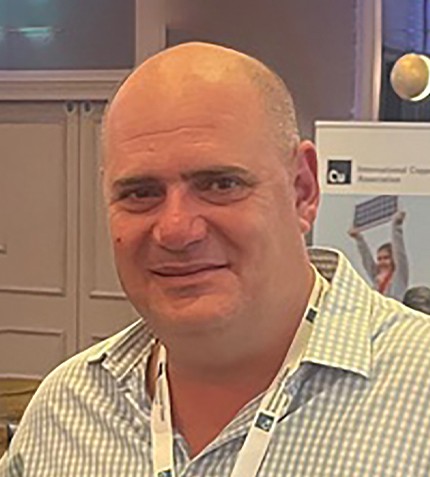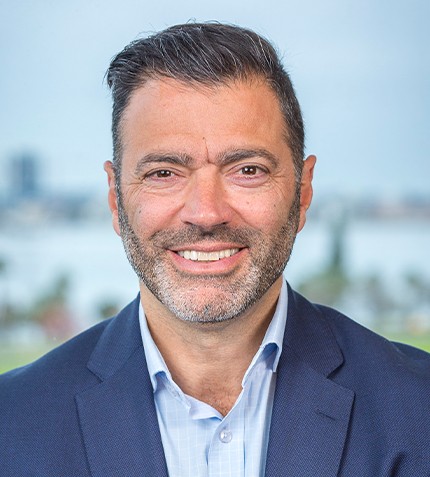
"Grid Battery Metals has been actively exploring the Clayton Valley project for several years. This area in Nevada is renowned for its lithium extraction potential, being the sole lithium brine-producing area in North America and stands poised for significant future developments."
Tim Fernback
PRESIDENT AND CEO, GRID BATTERY METALS
What was the reason behind the rebranding into Grid Battery Metals?
Grid Battery Metals is a company with a team that boasts a decade of experience in lithium exploration in Nevada. We own three projects in the region: Clayton Valley, Texas Spring and Volt Canyon. In early 2023, the company rebranded, changing its name from Nickel Rock Resources to Grid Battery Metals to reflect our focus on EV battery metals, particularly lithium. As a result, we are planning to further separate our nickel and lithium properties into two publicly traded entities. This strategic move aims to give shareholders the advantage of an equity interest in two publicly traded companies at no additional cost to the current Grid shareholder. We anticipate listing the new company in April 2024. Grid's nickel property in British Columbia is adjacent to FPX Nickel's Baptiste nickel project, one of the top 10 nickel resources currently being developed worldwide. Ee expect it to be integrated into the FPX project as it transitions into a mine, potentially becoming one of the leading nickel-producing mines in Canada.
Could you provide more information about your projects in Nevada?
Grid Battery Metals has been actively exploring the Clayton Valley project for several years. This area in Nevada is renowned for its lithium extraction potential, being the sole lithium brine-producing area in North America and stands poised for significant future developments. Our other project, Texas Spring, is located on the southern border of Surge Battery Metal's Northern Nevada Lithium project, which has been gaining considerable attention. I previously served as the President and CEO of Surge, and I was part of the team that discovered the Northern Nevada Lithium Project. We firmly believe in the substantial potential of the southern area. To date, we have conducted comprehensive soil sampling and geophysics assessments, and the results strongly indicate that this project could evolve into a flagship property due to its high prospect and the presence of lithium deposits like those found in Surge's Northern Nevada Lithium Project.
Additionally, we have the Volt Canyon Lithium Project in Monitor Valley, an area that shares signature characteristics with other lithium deposits found in claystone. Our team has recently been on-site, assessing its lithium potential and more news will be forthcoming about this property once the 2024 exploration season begins.
What will be the company’s focus in 2024?
We will focus on analyzing the assay lab results and fine tuning our overall Nevada exploration plan. Once we receive these results, we will combine them with the data from the soil samples and geophysics work, enabling us to develop a multi-phase test drilling program. The initial phase will likely entail drilling five to seven holes on both Texas Spring and Clayton Valley, and depending on the outcomes, we may consider expanding to a 20- or 30-hole program later in 2024 for each property. Volt Canyon will see additional exploration work to determine viable drill targets for both 2024 and 2025 exploration seasons.
What is Grid Battery Metals’ financial status?
In 2023, we completed three financing rounds, ensuring sufficient funds for our exploration campaigns in 2024. We also sold some non-core nickel assets in 2023 which yielded over US$5 million in non-dilutive capital to our balance sheet. Drawing from my background in investment banking, we prioritize maintaining a financial buffer of 18 to 24 months of operating capital. Currently, we have close to US$7 million in working capital on our balance sheet, which is plenty for the 2024 exploration season and beyond. This approach sets Grid apart from other companies that often run out of funds. Furthermore, we intend to separately finance the spin-off of our nickel assets in British Columbia separately and raise additional working capital for this new entity at the same time safeguarding Grid's current treasury.
What do you think sets Grid Battery Metals apart from other juniors?
We selected Nevada due to its highly favorable conditions. We prefer to operate in areas with low political risk, reliable crews, and a guarantee that funds raised will be directly invested in exploration. Nevada perfectly aligns with these criteria.
Nevada's strategic location within North America also offers supply chain advantages, thanks to legislation like the US Inflation Reduction Act and Canada’s Critical Minerals Act. The need for lithium is both long-term and global. We are building up our world-class exploration assets for our shareholders over the long-term to meet this demand.
How are automakers reshaping mineral supply chains for EVs?
In the past, automakers such as Tesla and GM primarily engaged with metal brokers like Glencore, who dealt with refined metals. However, they have now extended their reach into the supply chain by establishing connections with producers and junior mining companies. This shift is motivated by their desire to secure future supplies of critical minerals, such as lithium. This evolving approach opens exciting partnership opportunities for companies like Grid. It's a win-win situation that benefits both parties and ensures a steady supply of critical minerals for the growing EV market.










